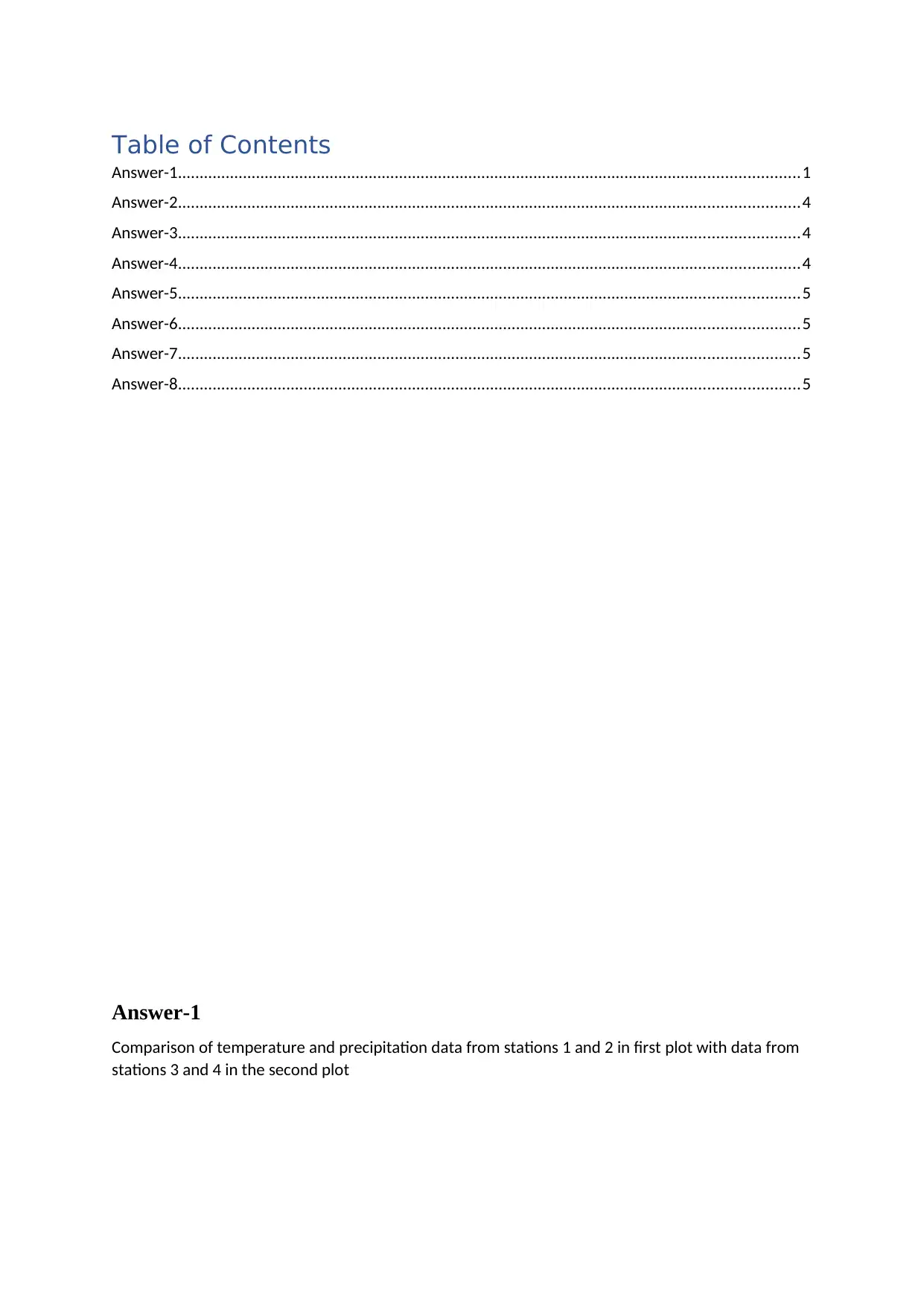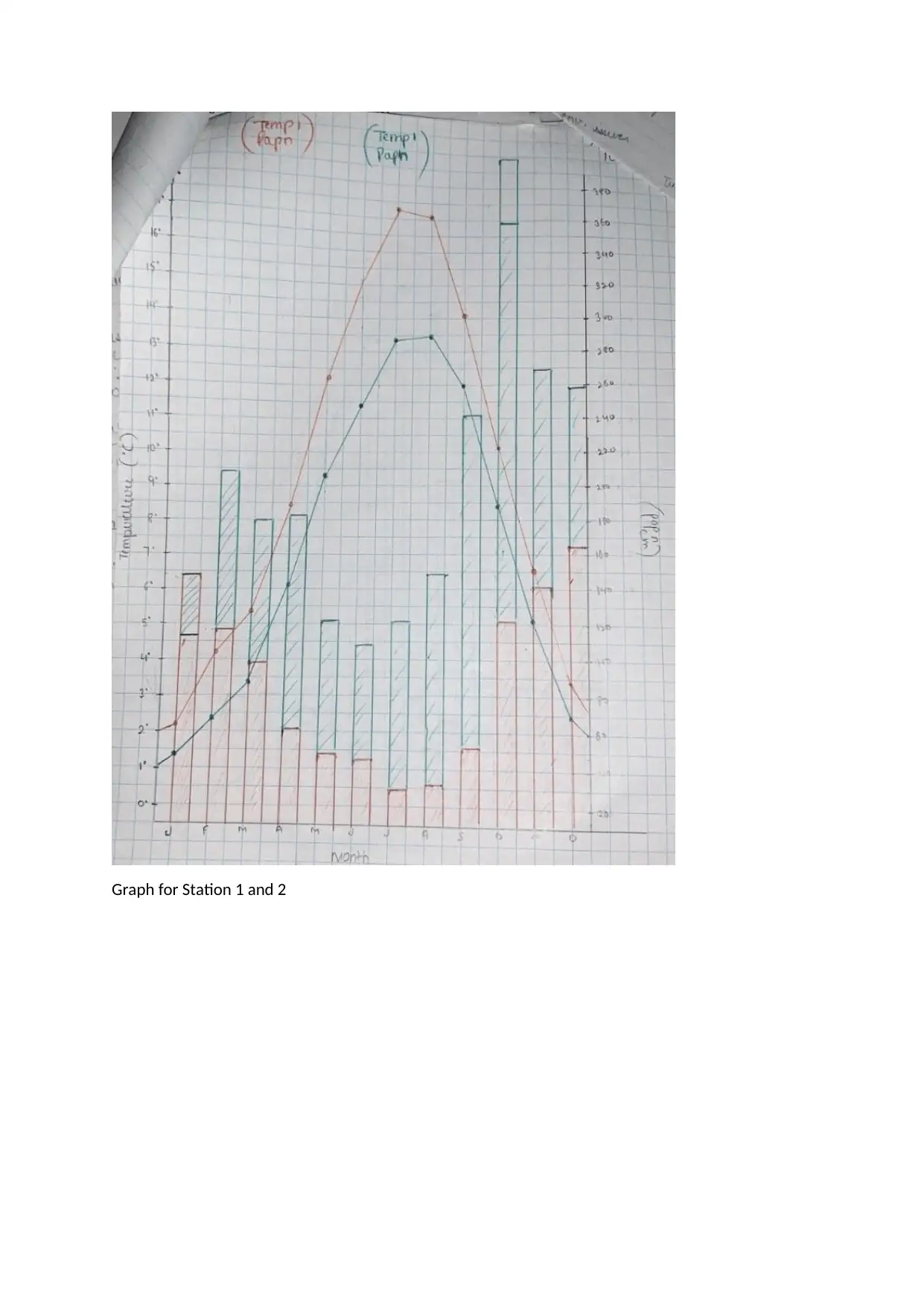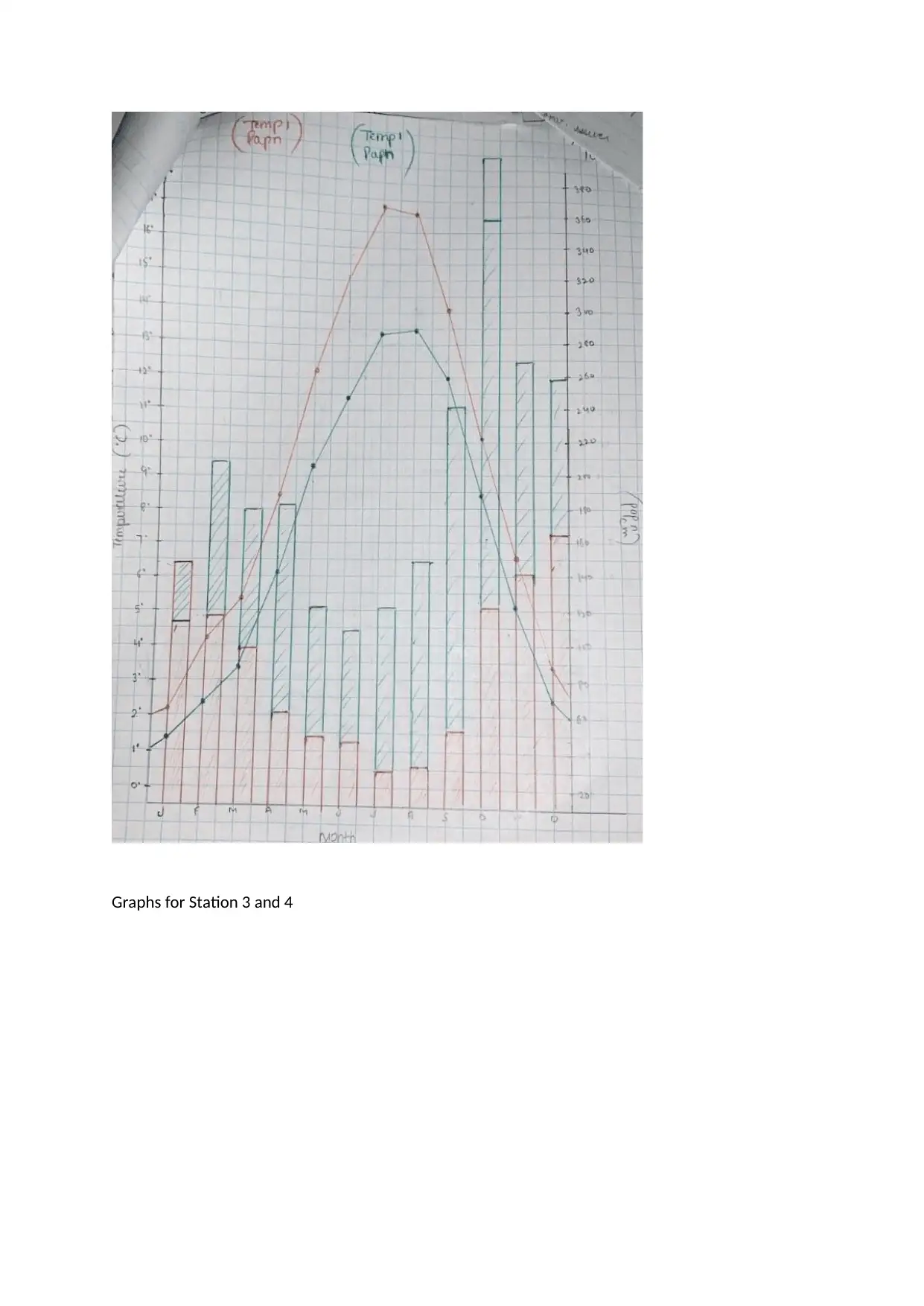Station Analysis: Temperature & Precipitation Data Interpretation
VerifiedAdded on 2024/06/21
|5
|599
|88
Homework Assignment
AI Summary
This assignment provides a detailed analysis of temperature and precipitation data collected from four different stations. It includes a comparison of temperature and precipitation patterns between stations 1 and 2 versus stations 3 and 4, presenting the data in graphical format. The analysis involves calculating monthly mean temperatures and discussing factors influencing precipitation data, such as rainfall volume and snowfall. The assignment identifies the stations with the highest and lowest mean temperatures, attributing these differences to geographical factors like proximity to the ocean and latitudinal location. It also examines annual temperature ranges and total precipitation levels across the stations, noting patterns related to coastal versus interior locations. Finally, the assignment provides brief climate characterizations for each station based on the analyzed data, relating temperature and precipitation to geographical location. Desklib offers a wide array of similar solved assignments and study resources for students.
1 out of 5






![[object Object]](/_next/static/media/star-bottom.7253800d.svg)